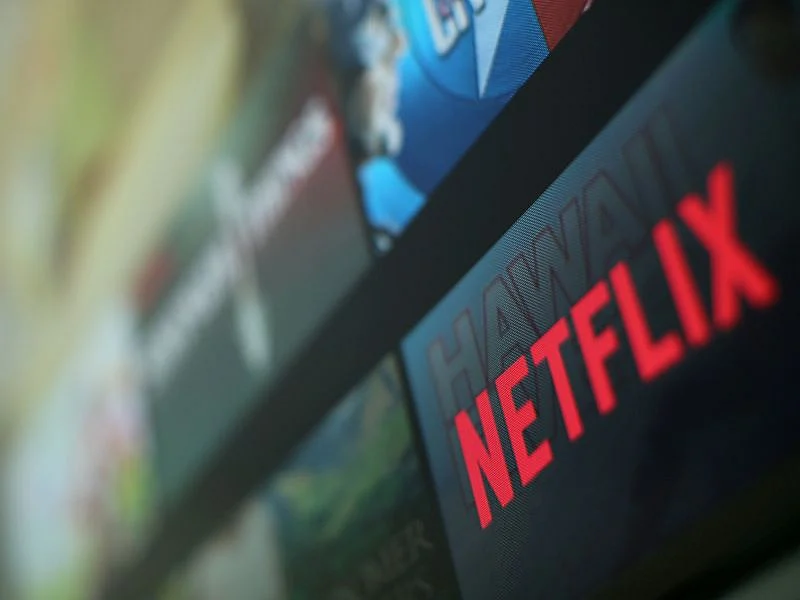Airlines: Why can't passengers still not get Netflix on board?
Airlines offer top-notch wi-fi connections, but Netflix is still some distance away

By all accounts, we live in an age where streaming content is ubiquitous - on our phones, smart TVs, even fridges. So why is it that, at 35,000 feet, we’re still cycling through airline-curated IFE menus instead of binging the latest Netflix hit?
The answer is less about technology, and more about licensing, infrastructure economics, and strategic control.
As airlines race to modernize the passenger experience, inflight entertainment (IFE) remains both a differentiator and a battleground. Yet, despite advances in satellite connectivity and the increasing availability of Wi-Fi on board - now offered on over 80% of long-haul aircraft globally - Netflix has remained conspicuously absent from the inflight experience.
Let’s unpack why.
Licensing at altitude is a legal minefield
The most fundamental roadblock is content rights. Netflix licenses much of its catalog on a territory-by-territory basis. What passengers can watch in Singapore differs from what’s available in Germany or the US.
The inflight environment, however, exists in a legal grey zone: an aircraft may take off in Dubai, fly over India, and land in the UK - crossing jurisdictions, censorship laws, and broadcasting regulations in one flight. Offering Netflix globally across a fleet would require securing multi-jurisdictional, mobile rights - something even the most progressive studios have hesitated to untangle.
In fact, the cost of global distribution rights for high-demand titles can be exponentially higher than regional licensing. For airlines operating hundreds of daily flights, this cost quickly becomes prohibitive - especially when compared to curated libraries from content service providers at a fraction of the price.
Bandwidth constraints still matter - but not forever
Despite advances in satellite-based connectivity (e.g., Viasat, Inmarsat), bandwidth onboard remains constrained and expensive. Streaming a single HD video consumes approximately 3–7 Mbps. Multiply that across even a modest 150-seat aircraft, and the math becomes unsustainable.
But this is changing. Qatar Airways recently announced a partnership with SpaceX’s Starlink, making it one of the first global full-service carriers to adopt this next-generation satellite solution. Starlink promises speeds of up to 350 Mbps per passenger with sub-20 millisecond latency. While initial rollouts will target select aircraft, this is a harbinger of what’s to come.
Still, bandwidth alone won’t solve the issue if the content rights and commercial logic aren’t aligned. Better internet makes Netflix technically possible - but not strategically inevitable.
Who owns the passenger experience?
Beyond the technical hurdles lies a strategic consideration. Airlines spend millions to differentiate their brand, and inflight entertainment is a key touchpoint. Embedding Netflix into the IFE system risks ceding part of that experience - and its data - to a third party.
Passenger viewing habits are valuable behavioral data. Handing that over to Netflix undermines potential for airline-driven personalization, loyalty marketing, and cross-selling. Instead, we’re seeing airlines explore white-labeled platforms or invest in proprietary entertainment ecosystems - think Singapore Airlines’ KrisWorld or Emirates’ ice - to maintain control and brand distinction.
Where we’re heading: Hybrid and BYOD models
Some carriers are experimenting with hybrid approaches. JetBlue offers free Wi-Fi capable of streaming, allowing passengers to access their own Netflix accounts on personal devices. Others, like Lufthansa and AirAsia, preload select streaming-style content to onboard servers for local delivery without connectivity.
The future likely lies in such Bring Your Own Device (BYOD) models, where passengers download Netflix content pre-flight or stream via onboard Wi-Fi within controlled bandwidth limits. Airlines will balance this with curated content, tailored advertising, and controlled environments to retain strategic autonomy.
Passengers may expect the Netflix experience at 35,000 feet - but the current commercial, legal, and technical realities make it an unrealistic proposition at scale. Even as trailblazers like Qatar Airways deploy cutting-edge solutions like Starlink, content licensing and platform control remain the true bottlenecks.
Until satellite capacity converges with global licensing reform and aligned brand strategy, the Netflix button on your seatback screen will remain a mirage. And for airlines, that may be exactly the point.
Network Links
GN StoreDownload our app
© Al Nisr Publishing LLC 2025. All rights reserved.